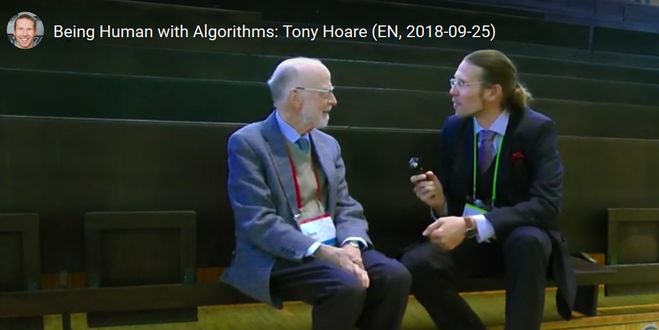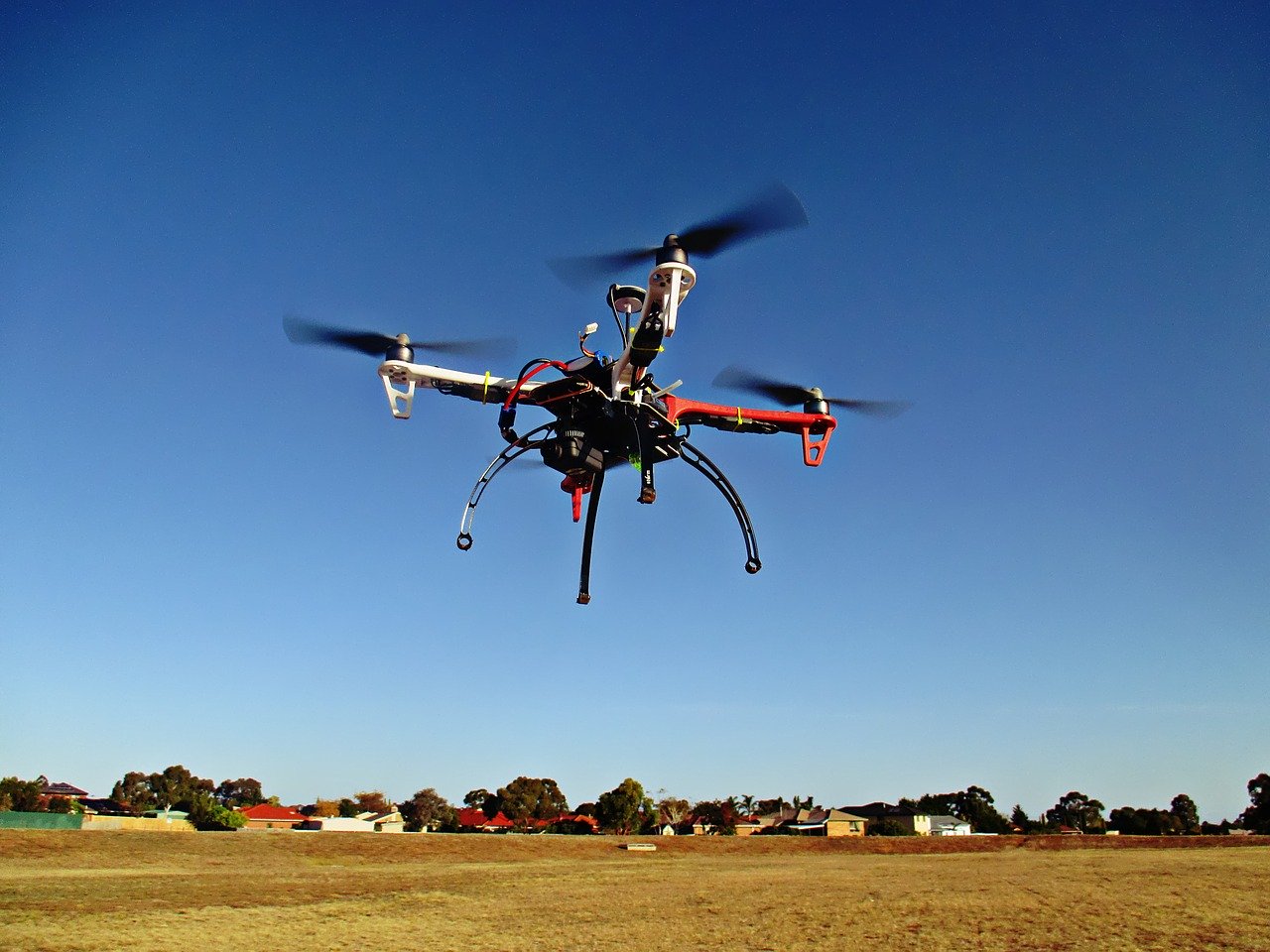Archive for month: April, 2020
High expectations for AI to ensure the security of new networks
/0 Comments/in Digital, In the News/by I'MTechAs networks increasingly rely on new, primarily software-based architectures, the issue of security cannot be overlooked. Artificial intelligence is one field researchers are exploring to provide sufficient protection for these new networks, such as 5G (and beyond) and constrained networks such as the IoT. An approach explored in particular by cybersecurity researchers at IMT Lille Douai.
“In a matter of a few dozen milliseconds, a well-targeted attack can wipe out an entire network and the services that go with it.” Ahmed Meddahi, a research professor at IMT Lille Douai, offers this frightening reminder about the threats to Internet-of-Things networks in particular. Behind their control screens in their security operations centers, network operators can identify a multitude of diverse attacks in the blink of an eye. Granted, not all attacks are carried out so quickly. But this example is a good illustration of the constraints weighing on the researchers and engineers who develop cyberdefense systems. Such systems must be able to monitor, analyze, sort, detect and react, all in just a few milliseconds.
For this, humans have two complementary technological tools on their side: new network architectures and artificial intelligence. 5G or WPAN (a network technology for the Internet of Things) are based on two important characteristics with cryptic acronyms: SDN — SDN-WISE for the IoT — and NFV. SDN, which stands for software-defined network, “is a network’s capacity to be programmed, configured and controlled in a centralized, dynamic way,” explains Ahmed Meddahi, who has been working on architecture security for the past several years. As for NFV, “it’s the virtualization of the IT world, adapted to the world of networks. The network functions which were purely hardware-based up to now are becoming software functions.” SDN and NFV are complementary and their primary aim is to reduce the development cycle for telecom services as well as the cost of network operations and maintenance.
Read more on I’MTech: SDN and Virtualization : More Intelligence in 5G networks
As far as cybersecurity is concerned, NFV and SDN could serve as a basis for providing an overview of the network, or could take on a portion of the complexity of IoT networks. The network operator in charge of security could therefore establish an overall security policy from his control post, with the rules and basic behavior of the network. He could then allow the network to make its own decisions instantaneously. The goal is to move towards more autonomous network security.
In the event of a threat or an attack, such an organization makes it possible to rapidly deny access or introduce filter rules for computer traffic, and therefore isolate or migrate segments of the network that are under attack. This sort of architecture or approach is an advantage for effectively responding to threats and making the network more resilient. But sometimes, the speed at which humans can analyze situations and make decisions does not suffice. That’s where artificial intelligence comes in.
Detecting more quickly than humans
“It’s one of the major areas of research in cybersecurity: first of all, how can we collect the most relevant information about network activity, out of a huge and widely-varying volume of traffic data, which, on top of that, is ever-growing? And second, how can we detect, identify and isolate an attack that only lasts a fraction of a second, or even anticipate it, to prevent the worst from happening?” says Ahmed Meddahi. New SDN and NFV architectures could help answer this question since these technologies will facilitate the integration of learning algorithms in network control systems. This is another promising new area of research for network and computer security scientists, which is naturally of interest to researchers at IMT Lille Douai.
The first challenge is to choose the right approach. Which algorithms should be used? Supervised, unsupervised or hybrid? And with which data? Traditional learning methods consist of showing the algorithm how the network behaves in a normal situation, and how it behaves in an abnormal situation or when under attack. It will then be able to learn and recognize situations that are almost identical to those it has learned. But there’s a problem: these learning methods based on examples or records are not compatible with the reality of cyberthreats.
“Attacks are dynamic and are constantly changing,” says Ahmed Meddahi. “Hackers can get past even the strongest counter-measures and defenses since they change their approach on a regular basis and constantly change their signature.” But with supervised learning, an algorithm is trained with existing attacks, at the risk of quickly becoming outpaced by the attacks of tomorrow.
That’ s why researchers and industry stakeholders are instead focusing on an unsupervised or hybrid learning approach, and even on new AI algorithms designed especially for cybersecurity purposes. In this case, an algorithm would learn by itself what qualifies as normal or abnormal network operation. Rather than detecting the trace or signature of an attack, it will learn how to recognize the conditions in which an attack has occurred in the past, and notify operators if the same conditions occur or are being brought together.
“The unsupervised approach also poses another problem: it requires constant learning on the network, which implies a significant cost in terms of resources,” says the IMT Lille Douai researcher. That is precisely the challenge facing scientists: finding a realistic approach to learning in an extremely dynamic, ever-changing environment. If researchers are beginning to work on new security issues for 5G and IoT networks, businesses naturally have high expectations. With 5G set to launch in France in 2020, operators and managers of these next-generation networks are more concerned than ever about the security of users and their data.
Recovering knowledge of local, traditional building materials
/0 Comments/in Europe EN, In the News, Materials/by I'MTechWhy is an old country farmhouse more pleasant in summer than a modern city building? Traditional building materials and natural stone provide old buildings with better thermal and hygrometric properties. Unfortunately, they often lack the technical characterizations they need to find their place in the construction industry. The European regional development project OEHM has set out to resolve this problem. It brings together IMT Mines Alès, the University of Montpellier and the National School of Architecture of Montpellier. Aymeric Girard, a materials researcher at IMT Mines Alès, gives us an overview of the project and the challenges involved.
You’re studying natural building materials through the OEHM project. Why is this?
Aymeric Girard: All building materials require technical characterization. It’s important, since proposals for buildings are always simulated by computer nowadays as a first step. But traditional building materials, which are not produced by industry, lack technical characteristics. By studying local, traditional materials through the project, we are striving to fill this gap.
If the construction industry doesn’t use these materials, is it interested in this knowledge?
AG: Yes, since one of the major observations about current buildings is that they rely too heavily on internal insulation. The main reason for this is a lack of thermal mass in modern buildings, meaning a mass of materials that serves as a heat regulator. In a new building made with conventional building materials, you’re hot in the summer and cold in the winter. So you need heat and air conditioning. But this is far less of a problem in old buildings built with traditional building materials. In Seville, which is one of the hottest cities in Europe, old churches and cathedrals remain cool in the summer. The construction industry is now seeking to model new buildings after these traditional structures.
Read more on I’MTech: In Search of Forgotten Cements
There’s also a second benefit. The construction industry is a sector that contributes heavily to greenhouse emissions. This is partially due to the environmental footprint of transporting materials. Using local stones encourages short supply chains, thereby reducing the environmental impact.
What materials are we talking about?
AG: For the OEHM project, we’re working with a clay brick factory and four natural stone quarries: one for granite and three for limestone. Some of these stones are truly local, since they come from the Occitanie region where IMT Mines Alès is located. Others are local in the sense that they come from France at least.
What aspects of these stones and bricks do you study?
AG : We conduct two main analyses of these stones: a thermal analysis and a hygrometric analysis. Hygrometry allows us to study a material’s ability to absorb humidity. That’s important because in winter, for example, the windows in a house are usually closed and you cook, take showers, sweat etc. All of these things increase the humidity level in rooms, which affects quality of life. Certain stones with very low porosity will not absorb this humidity at all, while others with high porosity will have a buffering effect and provide greater comfort.
How do you obtain the technical characteristics you’re seeking?
AG: The quarries send us small five-centimeter cubes to be analyzed. We use the hot-wire method to study heat transfer. This involves taking two cubes of the same stone, and putting a sensor the size of a post-it note between them. We heat one side and observe the speed at which the stone on the other side heats up. We also study the stones’ heat capacity, by putting even smaller samples measuring 5 mm per side in a mini-oven. This provides us with information about how long it takes to raise the stone’s temperature and about how it behaves.
In terms of humidity, we have a sort of refrigerator where we apply a constant amount of moisture, then we compare the weight of the dry stone with the saturated stone above, and deduce its capacity to absorb moisture. It’s a very long process that can take up to four months.
With whom are you working on this project?
AG: On the industrial side, we’re only working with the quarries for now. They’re interested in the technical characteristics we’re producing in order to provide their partners and customers with data about the materials. It’s important knowledge, just as when you buy glass wool to renovate your home, or when you compare offers to decide what to buy. On the research side, the project is part of a long collaboration between IMT Mines Alès, the University of Montpellier, and the National School of Architecture of Montpellier.
What will the project produce besides these technical characteristics?
AG: We plan to use the data we recover to develop our own material simulation software. And we’re also going to carry out real-site testing in collaboration with the National School of Architecture of Montpellier. They have a replica of a house that can be adapted to test materials. This will give us the opportunity to test our results and share insights with architects about the opportunities offered by natural materials suited to the Mediterranean climate.
What is eco-design?
/0 Comments/in Environment, In the News, Scientific literacy, What's?/by I'MTech In industry, it is increasingly necessary to design products and services with concern and respect for environmental issues. Such consideration is expressed through a practice that is gaining ground in a wide range of sectors: eco-design. Valérie Laforest, a researcher in environmental assessment and environmental engineering and organizations at Mines Saint-Étienne, explains the term.
In industry, it is increasingly necessary to design products and services with concern and respect for environmental issues. Such consideration is expressed through a practice that is gaining ground in a wide range of sectors: eco-design. Valérie Laforest, a researcher in environmental assessment and environmental engineering and organizations at Mines Saint-Étienne, explains the term.
What does eco-design mean?
Valérie Laforest: The principle of eco-design is to incorporate environmental considerations from the earliest stages of creating a service or product, meaning from the design stage. It’s a method governed by standards, at the national and international level, describing concepts and setting out current best practices for eco-design. We can just as well eco-design a building as we can a tee-shirt or a photocopying service.
Why this need to eco-design?
VL: There is no longer any doubt about the environmental pressure on the planet. Eco-design is one concrete way for us to think about how our actions impact the environment and consider alternatives to traditional production. Instead of producing, and then looking for solutions, it’s much more effective and efficient to ask questions from the design stage of a product to reduce or avoid the environmental impact.
What stages does eco-design apply to?
VL: In concrete terms, it’s based entirely on the life cycle of a system, from very early on in its existence. Eco-design thinking takes into account the extraction of raw materials, as well as the processing and use stages, until end of life. If we recover the product when it is no longer usable, to recycle it for example, that’s also an example of eco-design. As it stands today, end-of-life products are either sent to landfills, incinerated or recycled. Eco-design means thinking about the materials that can be used, but also thinking about how a product can be dismantled so as to be incorporated within another cycle.
When did we start hearing about this principle?
VL: The first tools arrived in the early 2000s but the concept may be older than that. Environmental issues and associated research have increased since 1990. But eco-design really emerged in a second phase when people started questioning the environmental impact of everyday things: our computer, sending an email, the difference between a polyester or cotton tee-shirt.
What eco-design tools are available for industry?
VL: The tools can fall into a number of categories. There are relatively simple ones, like check-lists or diagrams, while others are more complex. For example, there are life-cycle analysis tools to identify the environmental impacts, and software to incorporate environmental indicators in design tools. The latter require a certain degree of expertise in environmental assessment and a thorough understanding of environmental indicators. And developers and designers are not trained to use these kinds of tools.
Are there barriers to the development of this practice?
VL: There’s a real need to develop special tools for eco-design. Sure, some already exist, but they’re not really adapted to eco-design and can be hard to understand. This is part of our work as researchers, to develop new tools and methods for the environmental performance of human activities. For example, we’re working on projects with the Écoconception center, a key player in the Saint-Etienne region as well as at the national level.
In addition to tools, we also have to go visit companies to get things moving and see what’s holding them back. We have to consider how to train, change and push companies to get them to incorporate eco-design principles. It’s an entirely different way of thinking that requires an acceptance phase in order to rethink how they do things.
Is the circular economy a form of eco-design?
VL: Or is eco-design a form of the circular economy? That’s an important question, and answers vary depending on who you ask. Stakeholders who contribute to the circular economy will say that eco-design is part of this economy. And on the other side, eco-design will be seen as an initiator of the circular economy, since it provides a view of the circulation of material in order to reduce the environmental impact. What’s certain is that the two are linked.
Tiphaine Claveau for I’MTech
[box type=”info” align=”” class=”” width=””]
This article was published as part of Fondation Mines-Télécom‘s 2020 brochure series dedicated to sustainable digital technology and the impact of digital technology on the environment. Through a brochure, conference-debates, and events to promote science in conjunction with IMT, this series explores the uncertainties and challenges of the digital and environmental transitions.
[/box]
Joint AI: a platform to facilitate German-French research in AI
/1 Comment/in Digital, Europe EN, In the News/by I'MTechIn 2019, The German-French Academy for the Industry of the Future launched the Joint AI platform project. This platform bringing together IMT and the Technical University of Munich, promotes collaboration between researchers and industry to develop artificial intelligence tools. Its secure environment allows for intellectual property protection for the results, and the reproducibility of scientific results.
“The primary aim is to support artificial intelligence research projects between France and Germany.” This is how Anne-Sophie Taillandier begins her description of the Joint AI platform launched in 2019 by IMT and the Technical University of Munich. Since 2015, the two institutions have been working together through the German-French Academy for the Industry of the Future. This partnership has given rise to a number of research projects, some of which have focused on artificial intelligence. Researchers working in this area face a recurring problem: intellectual property protection for the results.
“One of the major risks for AI researchers is presenting their work to academic peers or industry stakeholders and having it stolen,” explains Anne-Sophie Taillandier. For several years, this French artificial intelligence expert has headed IMT’s TeraLab, which aims to facilitate AI research in a secure environment. “Through discussions with our colleagues at the Technical University of Munich, we realized that we each had infrastructures to host and develop AI projects, but that there was no transnational equivalent,” she explains. This gave rise to the Joint AI platform project: as a shared, reliable, protected site for German-French research on artificial intelligence.
Read more on I’MTech: TeraLab, a European Data Sanctuary
The platform is based on technological and legal tools. The hardware architecture and workspaces are designed to host data and work on it with the desired security level. Using a set of APIs, the results of a project can be highlighted and shared on both sides of the border, without having to move the data or the software developed. “Everyone can work with confidence, without having to provide access to their executable or data,” says Anne-Sophie Taillandier.
A tool for researchers…
For researchers working on AI — as well as other scientific disciplines — facilitating cooperation means facilitating the progress of research projects and results. This is especially true for all research related to Industry 4.0, as is the case for the German-French Academy for the Industry of the Future projects that the Joint AI platform currently hosts. “Research on industry involves complex infrastructures, made up of human users and sensors that link the physical and digital dimensions,” says Georg Carle, holder of the Network Architectures and Services Chair at the Technical University of Munich, and co-director of the project with Anne-Sophie Taillandier.
He explains that, “In order to be valuable, this research must be based on real data and generate realistic models.” And the more the data is shared and worked on by different teams of researchers, the more effective the resulting algorithms will be. For Georg Carle, “the Joint AI platform makes it possible to improve the reproducibility of results” between the French and German teams. “This leads to higher-quality results, with a bigger impact for the industry stakeholders.”
And for companies!
In addition to providing a collaborative tool for researchers, the Joint AI platform also provides innovation opportunities for companies involved in partnership-based research. When a German industry stakeholder seeks to collaborate with French researchers or vice versa, the legal constraints for moving data represent a major hurdle. Such collaboration is further limited by the fact that, even within the same large company, it can be difficult for the French and German branches to exchange data. “This can be for a variety of reasons: human resources personal data, data related to industrial property, or data concerning clients with whom there is a confidentiality guarantee,” says Anne-Sophie Taillandier.
Companies therefore need a secure location, from both a technological and legal standpoint, to facilitate joint research. Joint AI therefore makes it easier for private stakeholders to take part in research projects at the European level, such as Horizon 2020 framework program projects — or Horizon Europe for future European research projects as of next year. Such a platform offers a prototype for a solution to one of the biggest problems facing AI and digital innovation: secure data sharing between different stakeholders.
Also read on I’MTech:
Can workspaces become agile?
/0 Comments/in Economics and Society, In the News/by I'MTechInnovating, adapting ever-more rapidly to changes in the environment. Breaking away from the traditional office. The digital revolution has dramatically changed working methods, and with them, the way we organize space. Researchers from Institut Mines-Télécom Business School and IMT Atlantique have studied the paradoxes and tensions that arise when workspaces are designed to embody, promote and foster agility.
In recent years, the quest for agility has pushed companies to completely rethink their organization, methods and processes. They have urged their employees to develop new work practices. These changes often go hand-in-hand with a reconfiguration of spaces: the flexible office, digital workspaces that are modular and open, organized by work activity etc. But a sort of ambivalence can be seen behind these efforts.
“Spaces, locations and offices are often synonymous with having a sense of bearings, of longevity, as a specific territory we claim as the base for our work. Agility, on the other hand, encourages continual reconfiguration, a transitory organization, keeping bodies and heads in constant motion,” explains Marie Bia Figueiredo, a management researcher at Institut Mines-Télécom Business School. So what’s work life like when the office is designed to embody and foster organizational agility? How do employees experience this apparent contradiction and make these new workspaces their own? Marie Bia Figueiredo and her fellow researchers at Institut Mines-Télécom Business School and IMT Atlantique set out to explore these issues.
“These questions first occurred to us in 2016, at an observation day in the new offices of a major French bank which we called ‘The Oases’“, says Madeleine Besson, who is also a researcher in management at Mines-Télécom Business School. “We were struck by the omnipresence of references to agility in the talks presenting the buildings, in the way the space was designed, in the signage and even in the decorative elements. On one hand, companies have always relied on physical spaces to convey and embody the changes they hope to bring about in order to standardize and organize practices and behaviors. But at the same time, we must remember that the agile movement establishes a principle of autonomy and self-organization for teams. There was a certain dissonance to it.”
From agile methods to agile environment
The agile movement was formally established in the early 2000s with the aim of adapting quickly to change, whether in terms of disruptive technologies, the volatility of customers or regulatory developments. This quest for agility was first expressed through new project management methods, collectively referred to as “agile methods”. In principle, these methods are based on a willingness to accept risk and change and on reorganizing and adapting to such change on a permanent basis. Today, companies increasingly see the workspace as a vehicle for change and agility. “Organizations are seeking to align space, work and information technologies,” explain the Institut Mines-Télécom Business School researchers in a forthcoming publication in Terminal[1].
The “Oases” created by the French bank observed by the researchers exemplify this trend. They were designed to embody an “exceptional” drive for transformation in a banking sector which has been particularly affected by technological and economic transformations. During the researchers’ investigation, the company’s real estate director explained their motivation for creating such spaces, “We wanted the Oases to provide fertile grounds for new ways of working in an effort to attract new talents.” The decision was inspired by the iconic workspaces of companies such as Google or Apple, which can “create well-being and conditions that allow employees to work differently.”
The research team’s study shows how this requirement for agility in the corporate world is expressed –in particular through a requirement for adaptation and ubiquity. In order to preserve their modularity, the workspaces cannot be personalized. Instead, workspaces are reserved when arriving at the office and rolling chairs and height-adjustable tables ensure that the space and office can constantly be rearranged. Work is primarily coordinated in the digital space and collective work has become invisible. Physical space and digital space are closely interlinked to convey a requirement for ubiquity.
The researchers also note a requirement for creativity and happiness. “The environment is decorated with plastic smiley faces. The office is designed to provide a fun environment where employees are encouraged to play ping pong or pool,” they note. Lastly, a requirement for speed is expressed by the pervasiveness of references to the passage of time. Hourglasses of varying sizes serve as reminders that there is no leeway when it comes to projects being completed on schedule. “Agility claims to prioritize individual interactions above processes and tools, but these interactions are still subject to strong time pressure. And agility means working at a faster pace, since you have to be ready to cancel or repeat operations as required by customers, the context or new developments,” points out Géraldine Guérillot, a researcher from the IMT Atlantique team.
Attempts to make a “non-place” one’s own
How do employees perceive these changes? Some find it difficult to break with their previous work habits. “Many of them told us that senior executives had to set an example by using the game room or nap room before the employees dared to use it,” says Jean-Luc Moriceau, a researcher at Institut Mines-Télécom Business School. “Others, without showing strong opposition to the new working methods, find ways to get around them. This can be seen in teams who regularly meet up to ‘recreate their territory’ or high-level managers who reserve a room for an entire day“. In some workplaces, employees leave personal belongings to (re)gain their bearings. The flex-office depersonalizes the workplace, so employees attempt to make the space their own, thereby developing behaviors that are contrary to the constant, agile reorganization of space.
Others play along. For example, one of the managers explains that for him, the hourglasses are a polite way of reminding everyone that time is tight. “He’ll meet with anyone who wants to see him, but they must present their views within the allotted time, which is physically represented by the sand flowing through the hourglass,” explain the researchers. Agility appears to aim to shake up the work environment.
But the researchers provide a warning, “The quest for agility, embodied by the reconfiguration of space, when implemented in a too prescriptive and uniform manner, can lead to producing ‘non-places’. These spaces deny the role that feelings, territories, memory and status play in the operations of an organization and work collectives.” The researchers demonstrate how, in turn, this gives rise to discreet ways of taking ownership of such spaces and “producing places,” understood as “minor uses resulting in alternative ways of occupying the shared space.”
By Anne-Sophie Boutaud for I’MTech
[1] Moriceau J.-L., Besson M., Bia Figueiredo M., Guérillot G. (2020), L’espace agile, oasis ou mirage ? Mise en perspective de quelques difficultés et paradoxes pour les travailleurs (Agile Spaces, Oasis or Mirage? A Perspective on Difficulties and Paradoxes for Employees), Terminal, Technologie de l’Information, Culture et Société (forthcoming).
Adlen Ksentini
/0 Comments/in Our experts/by I'MTechEURECOM | 5G, Network virtualization, Network softwarization, Network slicing
[toggle title=”Find here all his articles on I’MTech” state=”open”]
- What is NFV (Network Function Virtualization)?
- What is SDN (Software-Defined Networking)?
- Putting drones to the 5G test
- SDN and virtualization: more intelligence in 5G networks
[/toggle]
Putting drones to the 5G test
/0 Comments/in Digital, Europe EN, In the News/by I'MTech 5G!Drones, a European project bringing together industrialists, network operators and research centers, was launched in June 2019 for a three-year period. It should ultimately validate the use of 5G for delivery services by drone. Adlen Ksentini, a researcher at EURECOM, a key partner in the project, explains the challenges involved.
5G!Drones, a European project bringing together industrialists, network operators and research centers, was launched in June 2019 for a three-year period. It should ultimately validate the use of 5G for delivery services by drone. Adlen Ksentini, a researcher at EURECOM, a key partner in the project, explains the challenges involved.
What was the context for developing the European 5G!Drones project?
Adlen Ksentini: The H2020 5G!Drones project is funded by the European Commission as part of phase 3 of the 5G PPP projects (5G Infrastructure Public Private Partnership). This phase aims to test use cases for vertical industry applications (IoT, industry 4.0, autonomous cars etc.) on 5G test platforms. 5G!Drones focuses on use cases involving flying drones, or Unmanned Aerial Vehicles (UAV), such as for transport of packages, extension of network coverage with drones, public security etc.
What is the aim of this project?
AK: The aim is twofold. First, to test eight use cases for UAV services on 5G platforms located in Sophia Antipolis, Athens (Greece), Espoo and Oulu (Finland) to collect information that will allow us to validate the use of 5G for a wider roll-out of UAV services. And second, the project seeks to highlight the ways in which 5G must be improved to guarantee these services.
What technological and scientific challenges do you face?
AK: A number of obstacles will have to be overcome during the project: these obstacles are related to safeguarding drone flights . To fly drones, certain conditions are required. First, there has to be a reliable network with low latency, since remote control of the drones requires low latency in order to correct the flight path and monitor the drones’ position in real time. And there also has to be strong interaction between the U-Space service (see box) and the network operator to plan flights and check conditions: weather, availability of network coverage etc. In addition to these obstacles to be overcome, the 5G !Drones project will develop a software system that will be placed above the platforms, to automate the trials and display the results in real time.
[box type=”info” align=”” class=”” width=””]
The U-Space service is in charge of approving the flight plan submitted by drone operators. Its job is to check whether the flight plan is feasible, meaning ensuring that there are no other flights planned on the selected path and determining whether the weather conditions are favorable.
[/box]
How are EURECOM researchers contributing to this project?
AK: EURECOM is a key partner in the project. EURECOM will provide its 5G testing platform based on its OpenAirInterface (OAI) tool, which provides Network Function Virtualization (NFV) and Multi-access Edge Computing (MEC) solutions. It will host two trials on public safety using flying drones, led by partners representing the vertical industry. In addition, EURECOM will be studying and proposing a solution for developing a 5G network dedicated to UAVs, based on the concept of network slicing.
Who are your partners and what collaborations are important for you?
AK: The project counts 20 partners, including network operators (Orange France and Poland, COSMOTE), specialists in the UAV field (Alerion, INVOLI, Hepta Airborne’s, Unmanned System Limited, CAFA Tech, INVOLI, Frequentis, DRONERADAR), industrial groups (NOKIA, Thalès and AIRBUS), a SME (INFOLYSIS) and research centers and universities (Oulu University, Aalto University, DEMOKRITOS, EURECOM), as well as the municipality of Egaleo in Greece. EURECOM is playing a central role in the project with UAV vertical industry partners by collaborating with all the members of the consortium and acting as a liaison between the UAV vertical industry partners, industrial groups and network operators.
What are the expected benefits of the project?
AK: In addition to the scientific benefits in terms of publications, the project will allow us to verify whether 5G networks are ready to deliver UAV services. Feedback will be provided to 3GPP standards organizations, as well as to the authorities that control the airspace for UAVs.
What are the next important steps for the project?
AK: After a first year in which the consortium focused on studying an architecture that would make it possible to establish a link between the vision of UAV industry stakeholders and 5G networks, as well as a detailed description of the use cases to be tested, the project will be starting its second year, which will focus on deploying the tests on the various sites and then begin the testing.
Learn more about the 5G!Drones project
Interview by Véronique Charlet for I’MTech
Categories
Archive
- June 2022
- May 2022
- April 2022
- March 2022
- February 2022
- January 2022
- December 2021
- November 2021
- October 2021
- September 2021
- August 2021
- July 2021
- June 2021
- May 2021
- April 2021
- March 2021
- February 2021
- January 2021
- December 2020
- November 2020
- October 2020
- September 2020
- July 2020
- June 2020
- May 2020
- April 2020
- March 2020
- February 2020
- January 2020
- December 2019
- November 2019
- October 2019
- September 2019
- August 2019
- July 2019
- June 2019
- May 2019
- April 2019
- March 2019
- February 2019
- January 2019
- December 2018
- November 2018
- October 2018
- September 2018
- August 2018
- July 2018
- June 2018
- May 2018
- April 2018
- March 2018
- February 2018
- January 2018
- December 2017
- November 2017
- October 2017
- September 2017
- August 2017
- July 2017
- June 2017
- May 2017
- April 2017
- February 2017
- January 2017
- December 2016
- November 2016
- October 2016
- September 2016
- July 2016
- June 2016
- May 2016
- April 2016
- March 2016
- February 2016
- January 2016
- December 2015
- November 2015
- October 2015
- September 2015
- July 2015
- June 2015
- April 2015
- March 2015
- January 2015
- December 2014
- October 2014
- July 2014
- June 2014
- May 2014
- April 2014
- November 2013
- July 2013








